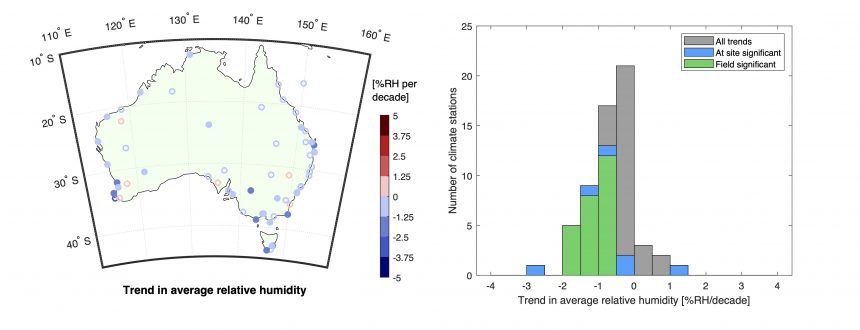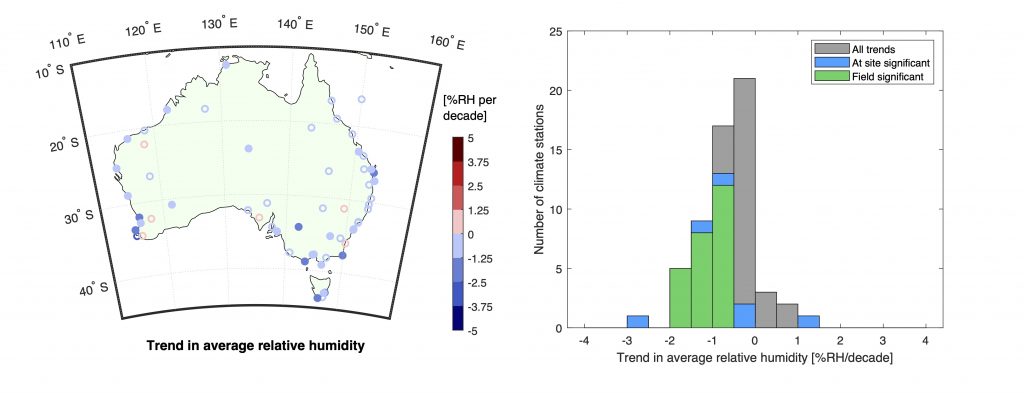Climate change and its impact on Australia’s relative humidity

Higher global temperatures, resulting from climate change, are expected to increase extreme rainfalls due to increases in the moisture holding capacity of the atmosphere. Higher temperatures are also likely to increase potential evaporation contributing to greater water stress. Whether such changes to our future climate eventuate will be strongly influenced by the changes in humidity and the ability of the atmosphere to hold more moisture. However, how relative humidity is changing with climate change is still debated.
Both actual evaporation and moisture storage in the atmosphere may increase with higher temperatures, suggested to result in quasi-constant relative humidity. However, as most atmospheric moisture is sourced from the ocean, and land areas are warming more than the ocean, relative humidity over land may also decrease. With observational evidence of changes to relative humidity in historical records is lacking, these hypotheses remain largely untested.

Researchers at the University of Melbourne utilised one of the longest available records of climate station measurements of relative humidity to investigate how relative humidity has changed over Australia. Published recently in Environmental Research Letters, it was found for the period 1955-2020 the average trend in relative humidity for Australia was −0.6%/decade, intensifying to −1.0%/decade for the period 1988-2020. Absolute humidity, measured by dew point temperature, was relatively constant. These findings suggest decreases in relative humidity are not due to a lack of water available for evaporation but instead implies that evaporation is not increasing in line with increases in the moisture storage capacity of the atmosphere due to high temperatures.
The magnitude of the relative humidity decrease is directly linked to the strength of the temperature increase. Regions that experienced greater temperature increases also experienced greater decreases in relative humidity. The negligible impact of the El Niño–Southern Oscillation and number of rain days on the trends in relative humidity means that, for Australia, changes in relative humidity are temperature driven. As a result of climate change, Australia is already experiencing reductions in streamflow across large parts of the continent. With decreases in relative humidity increasing the lifting condensation level, we can expect a shift towards less frequent rainfall events and increasing water scarcity for an already susceptible continent.
Reference:
Denson E, Wasko C & Peel MC, 2021. Decreases in relative humidity across Australia. Environmental Research Letters. 16: 074023. https://doi.org/10.1088/1748-9326/ac0aca
